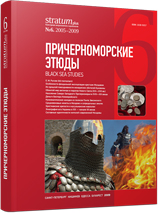Килийская каменная крепость
The Stone Fortress of Kilia
Author(s): Mariana ŞlapacSubject(s): History, Archaeology, Architecture, Middle Ages, Modern Age, 15th Century, 16th Century, 18th Century
Published by: Издательский дом Stratum, Университет «Высшая антропологическая школа»
Keywords: Fortress of Kilia; Genoese; Constantinople type; Byzantine influence; Ottomans
Summary/Abstract: The port of Kilia known as well as Cetatea Alba, “the gate of Christianity” and “the key for the whole Moldavia Land, Hungary and the Danube countries”, becomes the object of competition between Muntenia, Moldavia, Hungary, Poland and the Ottoman Empire in the Middle Ages.The fortified core of the settlement at that time is represented by a stone fortress, which includes the Genoese citadel and the Moldavian fortress. The former represents a rectangular building. It is well known in the Genoese region as well as across Italy. The second fortress, built by Stefan the Great in 1479, represents the “Constantinople type”, often met in Byzantine lands and in those under Byzantine influence. The author discovered a topographic document in the State Military-Historical Archive of Russia, elaborated in 1794 by the French engineer Kauffer, who fixed the moment of disappearance of the stone fortress. The article shows all of the Kilia fortresses: the Genoese citadel, the Moldavian fortress and the bastion fortress built by the Ottomans later.
Journal: Stratum plus. Археология и культурная антропология
- Issue Year: 2009
- Issue No: 6
- Page Range: 419-427
- Page Count: 9
- Language: Russian
- Content File-PDF

